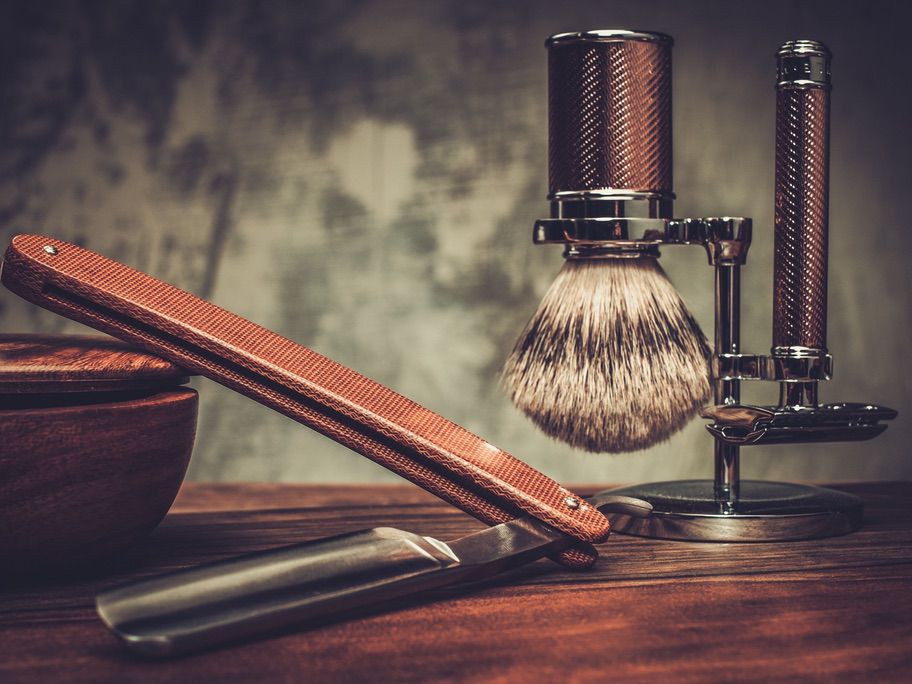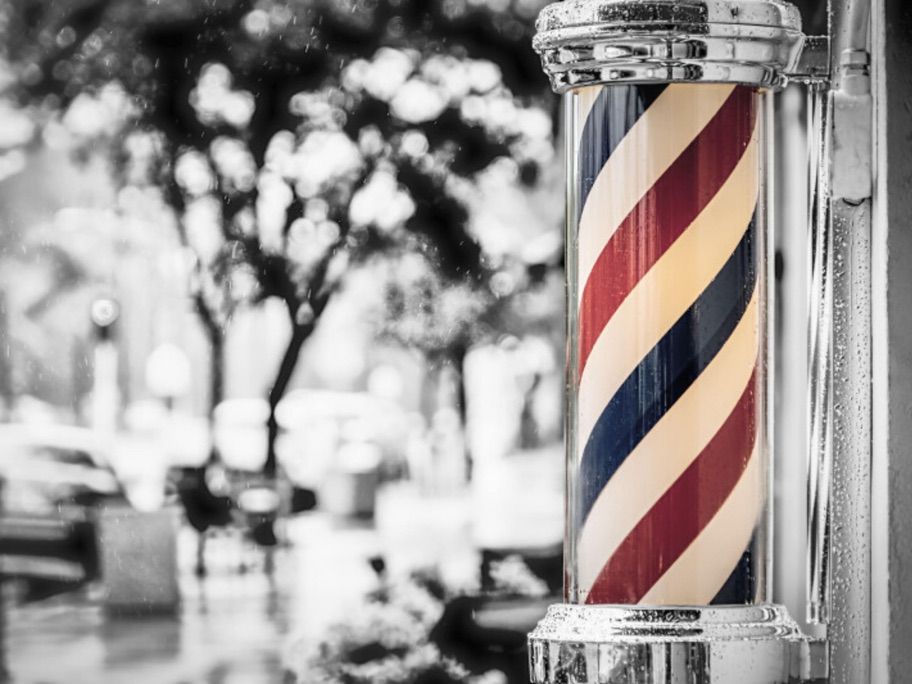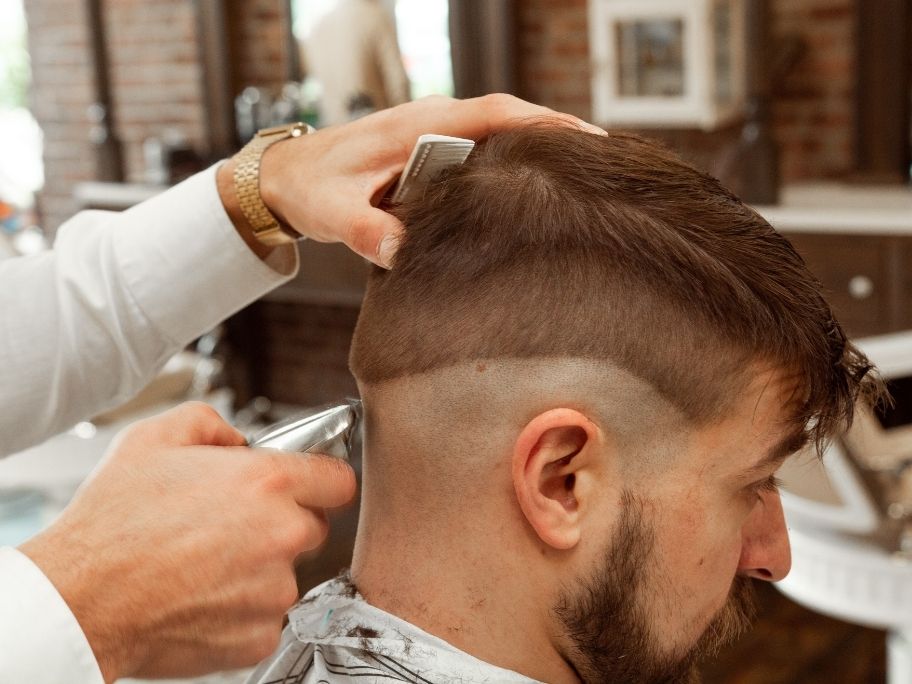These days, traditional shaving has unfortunately been somewhat forgotten. Hardly any man knows the art of the traditional wet shave, which was a matter of course for their grandfathers. Instead, cheap disposable or system razors, which can be found in any drugstore, are used instead.
Unfortunately, I can't explain when or why this change occurred, but the tradition of a clean wet shave suddenly came to an end. Fortunately, more and more men seem to be taking an interest in this wonderful male ritual again. If you're one of those men, this article is just right for you! In this blog post, I want to show you the benefits of a classic wet shave. I'll also introduce you to the individual tools you'll need, and finally, I'll walk you through the correct technique step by step.
The advantages of the classic wet shave
Lower costs
A pack of 8 typical system razor blades (e.g., Gillette Fusion5 ProGlide) costs around €25, which is roughly €3 per replacement blade. For those of you who loved math back in school (do such things really exist?), here's an even more mathematical breakdown: If you use such a blade up to twelve times as recommended, that results in a total of 96 shaves, or around €0.26 per shave. Safety razor blades cost around €0.10 per blade (e.g., 100 Astra blades for €10) and are sufficient for around 10-14 shaves, as the blades are double-edged. Double-edged means you can simply use the other side when the first one becomes too blunt. A full pack, therefore, is enough for 1,000-1,400 shaves, and equates to around €0.01 per shave. Switching to a classic safety razor can really be worthwhile!
Additionally, you can save even more money by using traditional shaving creams and soaps. A tub of chemical-laced shaving cream or gel, which most drugstores sell, can cost up to €5 and doesn't last nearly as long as you'd hope. Traditional shaving creams and soaps, on the other hand, are made from natural materials. While their initial cost may be a bit higher than shaving gels, you'll need less of this product overall to create a proper lather, which is essential for a smooth shave. This saves you more money in the long run.
Less waste
Traditional wet shaving with a double-edged safety razor (also called a safety razor) produces less waste than shaving with a system or disposable razor. The blades are usually full of facial hair after shaving, and cleaning them is often so laborious that the blades become unusable after a relatively short time and end up in the trash. This way, you've not only wasted a lot of money (see above), but also created unnecessary waste that could have been avoided.
The only waste a safety razor produces is the replaceable blade. This is the only spare part you need to buy. Its design makes cleaning the razor incredibly easy, and it still looks like new even after several years, so you don't have to buy a new one every few weeks. This makes the razor a more environmentally friendly shaving tool than drugstore razors.
If you care about the environment and want to go a step further, as mentioned in the first point, you can opt for classic creams and soaps sold in tubes and tubs. These produce less waste in the long run than the packaging used to sell shaving gels.
Better, more even shaves
Most men today are often unaware that their shaves aren't as clean and even as they think. Electric razors and multi-blade razors irritate the skin more than necessary and can cause razor burn, ingrown hairs, and redness. Shaving with a safety razor prevents skin irritation and gives your face a clean, healthy appearance, as you use only one blade instead of several that only unnecessarily stress your facial skin. These razors also allow for a more precise shave in difficult areas (e.g., the nose or sideburns).
More style
If you've read this far, I probably don't need to go into this point in detail ;).
The utensils
The safety razor
Switching from a cheap disposable razor to a double-edged safety razor is like upgrading from a Renault Clio to a Mercedes C-Class. A safety razor is a machine, a weapon. It's more comfortable to hold a heavy, sturdy piece of metal in your hand while shaving than a cheap piece of plastic.
There are numerous ways and places to find a safety razor. First and foremost, ask your grandfather if he still owns one. Chances are he does. If not, antique shops are another good option. Otherwise, just browse the internet or check out our website. For an investment of around €20-30, you'll definitely get a decent, high-quality safety razor.
The razor blades
You can choose from a variety of different blades. Each blade has a unique sharpness and cutting ability. It's best to experiment with different types until you find the ones you like best.
Here you can find our range of Double Edge razor blades: DE razor blades
The shaving brush
If you've never used a brush while shaving, you're in for a treat. Only with a brush is it possible to create a thick and rich shaving lather, which helps you reach every part of your beard and coat it with foam, so that even the smallest hairs stand upright. This is the prerequisite for a better and smoother shave. Plus, it just feels good to lather your face with a shaving brush to prepare it for the upcoming shave.
There are now many high-quality shaving brushes on the market that you can use to lather your face. Your skin will thank you for using a high-quality tool. You can choose between brushes with synthetic or badger hair.
Soaps and creams
Are you one of those men who doesn't put much effort into choosing their shaving cream? If so, then you should try something new! Because you shouldn't be putting this often blue-green, chemical-laced mixture on your face. Traditional shaving creams and soaps, on the other hand, consist primarily of natural ingredients that nourish your face and make you smell absolutely manly. While these high-quality creams and soaps may cost more than your original product, just a dab will create enough lather for you to lather twice. So, in the long run, you'll get more out of the classic creams and soaps.
To our shaving soaps and creams, click here: Shaving soaps and shaving creams
The technology
Preparations
If your goal is a clean, smooth shave, you need to properly prepare your beard. The goal of beard prep is to soften your beard hairs so that shaving is easier and causes less skin irritation. Therefore, the best time to shave is immediately after a shower. The steam softens the beard hairs, making them easier to remove with a safety razor. If you didn't shower before shaving, at least wet your beard with warm water. A hot towel is another good way to prepare your facial hair for shaving. You may have seen this in a barbershop, where it's known as a "hot towel shave."
The right foam
Take your shaving cream and pour a small amount (about the size of a 50-cent piece) into a shaving bowl. Soak your brush in lukewarm water and begin to lather. Only when the lather has a nice, firm consistency, apply it to your beard with the brush in circular motions. Once your face is nicely covered, smooth the lather with a few graceful strokes, so your face is now perfectly prepared for shaving.
The shave
Unlike shaving with a razor or electric shaver, shaving with a safety razor does require some technique and skill. However, once you've got the necessary routine, you'll be able to shave effectively and with style in no time. The four most important requirements for a successful shave with a safety razor are:
- Apply as little pressure as possible when shaving.
- Shave with the razor at the correct angle.
- Shave with the grain, not against it.
- Shave with short, gentle strokes.
You will probably have to get used to shaving with a safety razor, especially if you have used system razors your entire life.
When shaving, there's no need to apply unnecessary pressure to the razor, as its own weight is sufficient to remove the beard hairs. The greater the pressure, the higher the risk of cuts. Try holding the safety razor at the tip of the handle; this automatically reduces the pressure.
Arguably the most difficult part of shaving is holding and moving the razor, and thus the blade, at the correct angle. The optimal angle for a smooth, safe, and close shave is somewhere between 30 and 45 degrees. To find this, proceed as follows: Place the top of the razor directly on your cheek so that the handle is parallel to the floor. Now slowly lower the handle until the blade touches your skin and is able to remove your facial hair. If you're still unsure and don't want to start on your face right away, you can of course practice on your arm first.
Although shaving against the grain creates the feeling of truly smooth skin, it carries some risks. It increases the risk of cuts, skin irritation, and ingrown hairs. Therefore, always shave with the grain, especially when you're just starting out. You can lather your face again after the first shave and run the safety razor over your skin a second time. This pass is guaranteed to give you a smooth finish. So there's no need to unnecessarily stress your skin by shaving against the grain.
The goal when shaving should be to remove the beard gradually. Many men make the mistake of trying to get rid of their beard with a single stroke of the razor, meaning they move the blade continuously several centimeters across the face. This technique also only causes unnecessary skin irritation, which can easily be avoided by shaving several times with short strokes. Your facial skin will thank you!
After shaving
Now wash your face with cold water to rinse away any shaving cream and close your pores. Follow with a good aftershave. There are several options to choose from: classic aftershave, aftershave balm, or aftershave lotion. The former is less suitable for sensitive skin, as the alcohol it contains causes the typical burning sensation. Balms and lotions are particularly kind to the skin and contain many rich ingredients that provide your skin with long-lasting protection. After shaving, these products will give your face a fresh and healthy look.
Click here to see our after-shave products: After-Shave
If you've stuck with it this far, nothing stands in the way of a traditional wet shave. So get in the bathroom and have fun!
Image credit: "Shaving accessories on a luxury wooden background" by Nejron Photo, Shutterstock. Standard License



